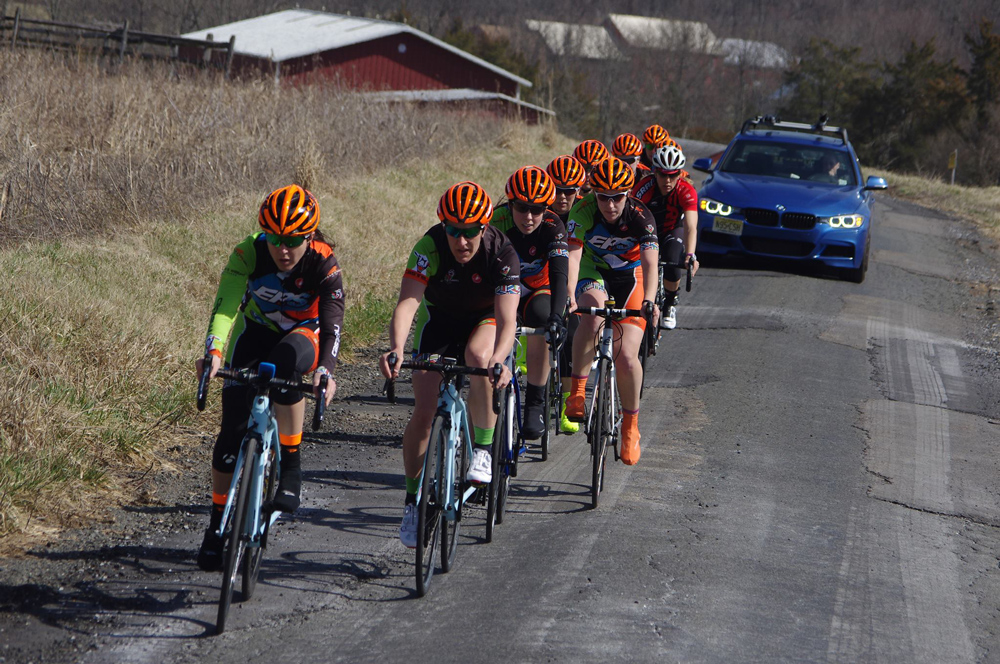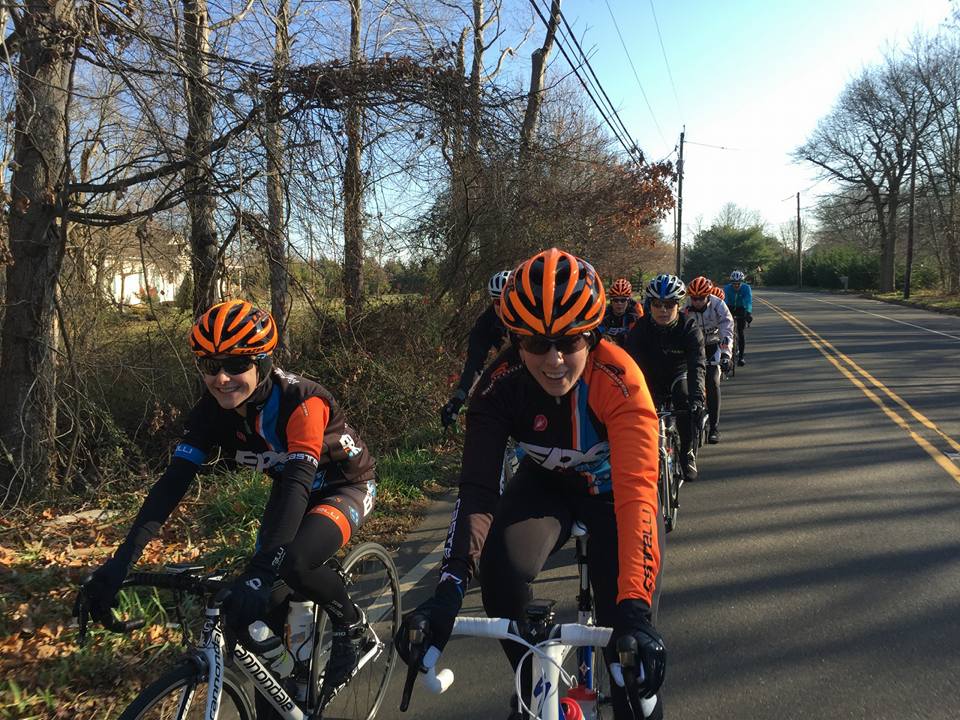Cycling is a very social sport and group rides can be one of the best parts of being a cyclist. Getting to socialize with your friends while getting your workout in makes the miles fly by. Group riding is great for motivation on a long ride and also for pushing yourself when you join in with a group that is a bit faster than you. I participated in a wonderful group ride this past weekend with some amazing people and while it was a fun ride, many of those people were not regular group riders and it showed. There were definite missteps in group riding safety and etiquette that I noticed. It made me think about what tips I would want to give about group riding to cycling newbies or newbies to group riding.
DON’T:
- Be oblivious to the group around you. Pay attention to where the other riders are in relation to you. If an obstacle comes up you need to know if someone is next to you so you don’t hit them while trying to avoid that pothole. You don’t want to cause a crash or other incident on what was supposed to be a fun and friendly recreational ride. Conversely, you don’t want someone crashing into you, so just be alert.
- Go off the front if you don’t know the route. It’s not the responsibility of the leader or the group to chase you down if you missed a turn, plus you may confuse some others in the group and they may follow you when you wind up making that wrong turn.
- Slam on your breaks or make erratic movements in the middle of the group. A predictable rider is a safe rider. Accidents can happen, but keeping a steady pace or signaling when you may have to slow down instead of coming abruptly to a stop can help minimize accidents.
- Ride out in the middle of the road. Riding two abreast (while not impeding traffic) is legal, but that doesn’t mean one person is riding on the white line at the right of the road and the other is riding the yellow line in the middle of the road. Try to stay as close together as you comfortably can. If a road seems particularly busy, stay single file until the traffic dissipates or you turn off of that road.
- Treat every group ride like a race. A group ride is not a race, so you don’t need to go to the front and hammer, trying to destroy everyone, especially if this is not what the ride leader has dictated. Some rides are meant to be hammerfests and that is usually established before the start of the ride. If that is the case, hammer away! If the ride leader says that this will be a fun and casual ride, do not be the one who blows up their ride.
- Overlap wheels with the person in front of you. If you overlap your front wheel with that person’s rear wheel they probably won’t know it. So, when they move to the side to dodge a pothole or other debris, they may unintentionally hit your wheel causing you and possibly others in the group to crash. If you are clearly next to someone that’s fine, but if you are just overlapping a little bit then that is just asking for trouble.

An example of an organized and tight group ride.
DO!!!
- Obey the ride leader. Listen to directions given by the ride leader at the beginning of the ride. They may point out spots that could be dangerous, roads that may be busy, or give information about what the pace of this ride will be. Stick with the plan of the ride leader. If the ride is too slow for you or not exactly what you were looking for, you will know and can try another ride that may fit your speed or style better next time.
- Ride the pace of the group. If the group is riding at a certain speed, then stick with that speed. Don’t be the person who is riding 50 feet off the front of the group. First of all, what fun is that, since you aren’t really riding and socializing with the group anyway? Also, this sometimes will cause the ride to pick up to a pace that was faster than intended by the ride leader.
- Be respectful of motorists. We want to coexist peacefully with cars on the road and limit the amount of animosity between cyclists and motorists.
- Use the group ride to learn some skills, drafting, pace lining or just getting more comfortable riding with others around you. You may not want to become a road racer, but even in recreational riding these skills are useful.
- Call things out and point things out on the ride. Call out “Car Back” if you are at the back of the group and hear a car coming. Point out holes or other obstacles in the road. Signal upcoming turns if you know them or see the ride leader signaling. All of these things will help to keep the group organized and safe.
- Stop and help a fellow rider who has a mechanical or at least let the ride leader know so they can determine if the ride should stop or at least slow down to allow that person to get back into the group.
- Enjoy the ride and the company of others. Cycling can be a very social sport and it’s great to find a good group that you enjoy riding and chatting with that also enjoys your company on the ride.
Remembering to respect the rules of the road, your fellow riders and the ride leader will be the first steps to becoming a competent and well-liked group rider. Again, cycling can be a very social sport and riding in groups is way more fun than riding alone, so be safe, learn from those around you and enjoy the ride!

Group riding is fun, just be alert, respectful and safe.